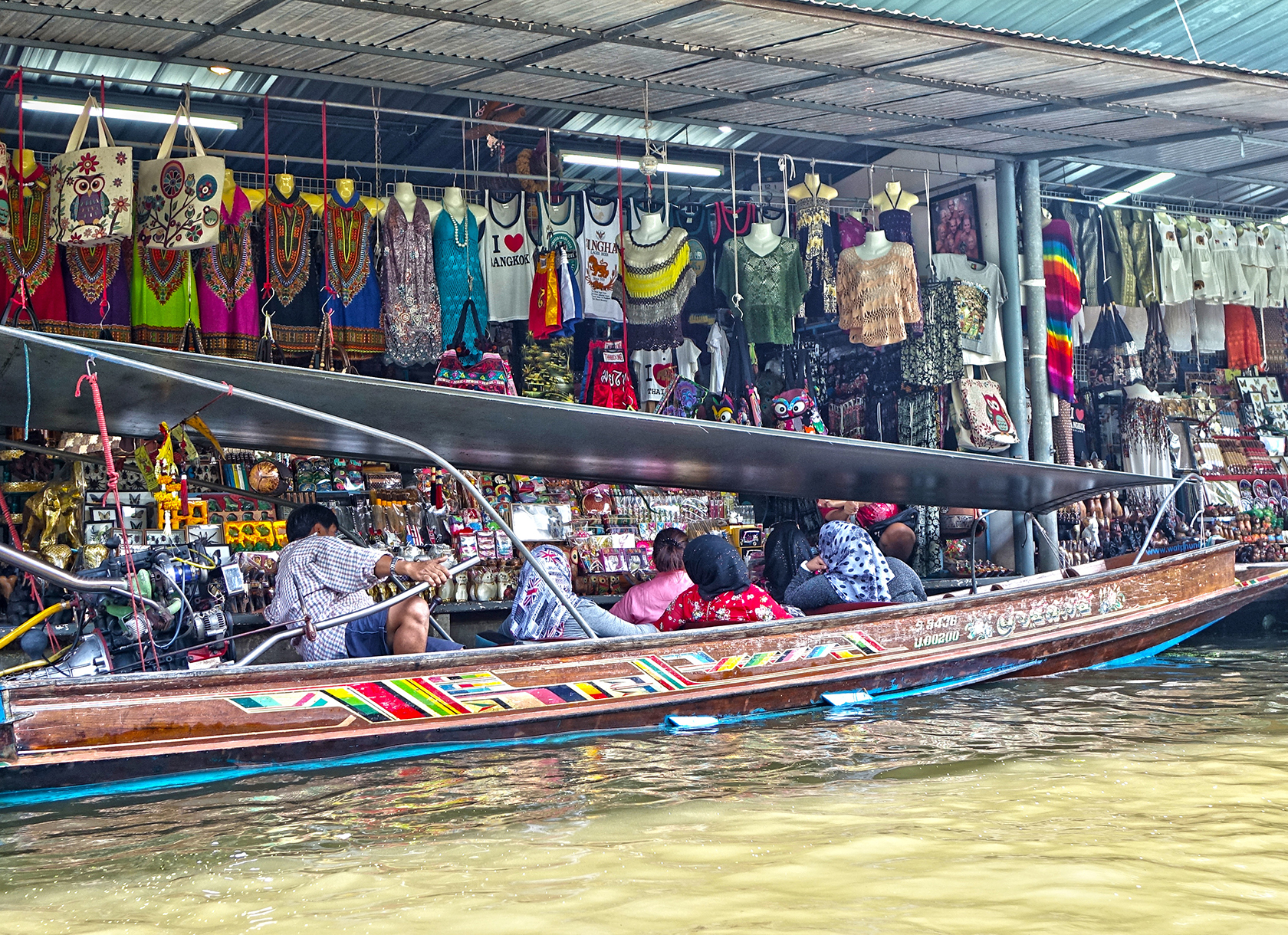By Emily Glory Peters

Bangkok’s khlongs: The historic canal system connecting residents across the city is also a mode of transport that sustains a vibrant floating market culture. Over time, many khlongs have been filled in or become so polluted as to inhibit their use. But what if science could be used to revive some of those khlongs and their surroundings—and consequently improve the lives of neighbors along the waterways?
That was the challenge Professor of Chemistry and Environmental Science Katie Purvis-Roberts put to her students this fall. With funding from The Claremont College’s EnvironLab Asia initiative, a laboratory that links knowledge with practice, environmental chemistry students from Scripps, Pitzer, and Claremont McKenna teamed up with graduate-level design students at Bangkok’s King Mongkut’s University of Technology Thonburi (KMUTT) to conceptualize methods of reviving the canal metropolis.
“This project explored some core elements of environmental science—atmosphere and water—and how they relate to people’s lives,” said Purvis-Roberts. “As scientists, my students had to use a liberal arts mindset combining chemistry, sociology, and psychology to explore how they could impact these canal communities for the better.”
Naturally, COVID-19 necessitated some changes. Prior to the onset of the pandemic, Purvis-Roberts had planned to secure funding to host an in-person workshop and potentially bring some students to Thailand during summer 2021. Those plans were put on hold—but the collaborative soul of the project persisted despite ensuing shutdowns.
“My colleague Kanjanee Budthimedhee, the Chair of the Graduate program in Design and Planning at KMUTT, received funding from the Bangkok government to support those who had lost jobs due to COVID-19,” explained Purvis-Roberts. “She was able to hire people to take air and water samples in their homes and yards; they even counted how many people, boats, and bicycles went by to gauge traffic. They then shared that data with my class for analysis.”
Relying on data collected by non-scientists was challenging, explained Scripps chemistry major Mairead Brownell ’22, but it compelled her and her colleagues to adjust their method of communicating scientific concepts in laymen’s terms. Students worked in small groups specific to certain regions of Bangkok, parsing the data to learn as much as they could about the atmosphere, water, and biodiversity of their khlong areas. And, rather than receiving a pre-conceived directive from Professor Purvis-Roberts, Brownell shared that students were encouraged to establish their own hypotheses.
“We were looking at how the khlong environment impacted people’s lives and vice versa. There was clearly so much potential for recreational and commercial use of the area that could help offer a greener public transit option and ease other environmental issues,” said Brownell. “We made some conclusions and summarized them in a way we thought would be useful to the KMUTT students, then regularly met virtually to discuss and help brainstorm ideas.”
Resulting design concepts included everything from waterway lights that would change color to reflect air and water quality to an interactive comic and app that local elementary children could use to explore the area and learn more about khlong culture, pollution, and preservation. Purvis-Roberts noted that additional real-time data and funding would be needed to create some of these projects—but she’s optimistic. “This collaboration between The Claremont Colleges and KMUTT is a perfect example of how students addressing real-life issues for communities can create something beautiful as well as functional,” she said.
Of course, the project is more than a transcontinental exercise in collaboration. Purvis-Roberts remains involved with the Asia-Pacific Economic Cooperation (APEC), a global, intergovernmental agency, whose funding through the APEC Energy Working Group has helped her bring together international faculty and policymakers to make science-informed policy decisions. Purvis-Roberts hopes future environmental chemistry students can build on her fall class’s ideas and present their findings to decision-makers who can put them into action—a hope Brownell shares.
“Sometimes the biggest challenge is transferring knowledge in a way that makes sense to those in a position of influence. With this project, we saw that the marriage of chemistry with design can convey these concepts more effectively than reading a paper that’s loaded with scientific jargon,” she said. For her, the most powerful outcome of the collaboration was realizing how student research—even at the undergraduate level—can pave the way for real societal change.
“This isn’t just science for science’s sake,” she said. “We’re making an impact.”

